List of Contributors xv
Foreword xix
Preface xxi
1 Food Safety: A Global Perspective 1
Karl R. Matthews
1.1 Introduction 1
1.2 National and global food safety events 2
1.3 Foodborne illness outbreaks: imports and exports 3
1.4 Regulations impacting food safety 4
1.5 China’s food safety growing pains 6
1.6 Food safety and product testing 7
1.7 Fresh fruits and vegetables safety 7
1.8 Conclusions and future outlook 8
References 8
2 Food Safety: Consumer Perceptions and Practices 11
Anne Wilcock and Brita Ball
2.1 Introduction 11
2.2 Novel technologies and issues 13
2.2.1 Irradiation 14
2.2.2 Genetic modification 15
2.2.3 Nanotechnology 16
2.2.4 Hormone use in food animals 17
2.2.5 Organic foods 19
2.2.6 Deliberate and accidental contamination 19
2.3 Consumer attitudes, knowledge and behavior 21
2.3.1 Types of food safety issues 21
2.3.2 Knowledge versus behavior 22
2.3.3 Influence of consumer demographics 23
2.3.4 Knowledge and behavior 23
2.4 Conclusion and outlook 24
References 25
3 Educating for Food Safety 31
Angela M. Fraser and Cortney Miller
3.1 Introduction 31
3.2 Food safety education targeting food handlers 33
3.3 Effective food safety education interventions 38
3.3.1 Intervention design 38
3.3.2 Instructional strategies 41
3.3.3 Learner assessment 43
3.3.4 Training in languages other than English 44
3.4 Future outlook 45
Acknowledgements 45
References 46
4 Food Safety Training in Food Services 49
Caroline Opolski Medeiros, Suzi Barletto Cavalli, and Elisabete Salay
4.1 Introduction 49
4.2 Legislation about training 50
4.2.1 European Union 50
4.2.2 United States 50
4.2.3 Mercosur 51
4.2.4 Brazil 51
4.3 Evaluation of the programs 51
4.4 Planning the training programs 52
4.4.1 Knowing the target public 52
4.4.2 Training themes 52
4.4.3 Training methods 53
4.4.4 Duration of training programs 58
4.4.5 Language used in training 58
4.5 Conclusions and future outlook 58
References 59
5 Product Tracing Systems 63
Jennifer McEntire and Tejas Bhatt
5.1 Introduction 63
5.2 Traceability: meaning and context 64
5.2.1 Tracebacks, traceforwards, and recalls 64
5.2.2 Traceability system attributes 65
5.3 International traceability regulations 65
5.3.1 Codex 66
5.4 Private global traceability standards 67
5.4.1 International Standards Organization (ISO) 67
5.4.2 Global Food Safety Initiative (GFSI) 67
5.4.3 GS1 68
5.5 Country-specific traceability requirements 68
5.5.1 Traceability in developed economies 69
5.5.2 Traceability through regulatory consolidation 72
5.5.3 Traceability through transformative events 72
5.5.4 Traceability in developing countries 73
5.6 Costs and benefits to traceability 75
5.6.1 Societal benefits 75
5.6.2 Government benefits 75
5.6.3 Industry costs and benefits 75
5.7 Challenges 76
5.7.1 Education 76
5.7.2 Technology 76
5.7.3 Commingling: a challenge to traceability 77
5.8 The role of technology in traceability 77
5.9 Steps to achieve a global, traceable supply chain 78
5.10 Summary and outlook 79
Acknowledgements 79
References 79
6 Linking Local Suppliers to Global Food Markets: A Critical Analysis of Food Safety Issues in Developing Countries 83
Sapna A. Narula and Neeraj Dangi
6.1 Introduction 84
6.2 The rise of global supply chains 85
6.3 Global trade opportunities for developing countries 85
6.4 Food safety issues: traceability, certification, labelling and phytosanitary 86
6.4.1 Traceability and certification 86
6.4.2 Labelling 87
6.4.3 Phytosanitary issues 88
6.5 Role of public standards 88
6.5.1 Codex Alimentarius 89
6.5.2 Global Food Safety Initiative (GFSI) 89
6.5.3 Food safety initiatives: Philippines 89
6.5.4 Strengthening food safety initiatives: India 90
6.6 Role of private standards in food supply chains 90
6.7 Challenges faced by developing countries in food safety implementation 92
6.7.1 Development of cold chains in India 92
6.8 Conclusions and future outlook 93
References 96
7 Achieving Quality Chemical Measurements in Foods 99
Yiu-chung Wong and Michael Walker
7.1 Introduction 100
7.2 Quality assurance in food analysis 101
7.2.1 Method validation 101
7.2.2 Control chart 107
7.2.3 Traceability 108
7.2.4 Measurement uncertainty 110
7.2.5 Laboratory accreditation 111
7.3 Metrology in chemistry 111
7.3.1 Assigned values in PT programmes 114
7.3.2 PT on melamine in milk 115
7.3.3 PT on cypermethrin in green tea 117
7.3.4 Insights from the two described PT 120
7.4 Conclusions and future outlook 120
Acknowledgements 120
References 121
8 Protection of the Agri-Food Chain by Chemical Analysis: The European Context 125
Michael Walker and Yiu-chung Wong
8.1 Introduction 125
8.2 European food and feed law 127
8.3 Chemical contaminants 128
8.3.1 Mycotoxins 129
8.3.2 Aluminium in noodles 135
8.3.3 Veterinary residues: Nitrofurans 137
8.3.4 Non-regulated contaminants 138
8.4 Resolution of disputed chemical results 139
8.5 Conclusions and future outlook 140
Acknowledgements 140
References 140
9 Pesticide Residues in Food: Health Implications for Children and Women 145
Muhammad Atif Randhawa, Salim-ur-Rehman, Faqir Muhammad Anjum and Javaid Aziz Awan
9.1 Introduction 145
9.2 Pesticides 146
9.2.1 Definition of pesticide 146
9.2.2 History of pesticide production and application 146
9.2.3 Worldwide production and consumption of pesticides 146
9.2.4 Benefits and risks of pesticide application 147
9.3 Pathway of pesticide residues in the food chain 147
9.3.1 Pesticide residues in soil and groundwater 147
9.3.2 Plant uptake of pesticide residues 149
9.3.3 Pesticide residues in feed and food 149
9.3.4 Pesticide residues in livestock/animal tissues 149
9.4 Pesticide residue dissipation during processing 150
9.4.1 Dissipation of pesticide residues by washing with water 150
9.4.2 Dissipation of pesticide residues by dipping in chemical solutions 150
9.4.3 Dissipation of pesticide residues by heat treatment 150
9.4.4 Dissipation of pesticide residues by low-temperature storage 153
9.5 Pesticide residues in food and food products 153
9.5.1 Pesticide residues in fruits and vegetables 153
9.5.2 Pesticide residues in milk 155
9.5.3 Pesticide residues in organic foods 155
9.6 Pesticide residues in humans 155
9.6.1 Pathways of pesticide residues in women 156
9.6.2 Pathways of pesticide residues in children 157
9.7 Health repercussions 157
9.8 Measures to combat pesticide exposure 159
References 160
10 The Need for a Closer Look at Pesticide Toxicity during GMO Assessment 167
Robin Mesnage and Gilles-Éric Séralini
10.1 Purpose, aim and scope 168
10.2 A silent pandemic 168
10.2.1 First observations on animal and human reproduction 168
10.2.2 Endocrine and nervous disruptions due to the aromatic structure of pesticides 169
10.3 Link between pesticides and agricultural GMOs 171
10.4 Focus on Roundup toxicity in GMOs 172
10.4.1 Adjuvants: glyphosate is not the major toxicant in Roundup 172
10.4.2 Glyphosate action in non-target species 173
10.4.3 Long-term effects of Roundup or its residues in GMOs 174
10.5 Agricultural GMOs producing Bt are new insecticidal plants 176
10.6 Side-effects of the genetic modification itself 177
10.6.1 Specific side effects of the transgene expression 177
10.6.2 Insertional mutagenesis or new unexpected/unexplainable metabolism 178
10.7 Limits and difficulties of interpretations in toxicity tests 178
10.8 The relevance of in vivo findings and length of the nutritional tests 180
10.8.1 Insufficiencies of in vitro tests 180
10.8.2 Limitations of 90-day-long tests 181
10.8.3 The need for additional tests including long-term tests 181
10.8.4 Unraveling the effects of mixtures 182
10.9 Conclusions and future outlook 183
References 183
11 What Have We Learnt from the Melamine-tainted Milk Incidents in China? 191
Miao Hong, Cui Xia, Zhu Pan, and Wu Yongning
11.1 Introduction 191
11.2 Melamine and its analogs 192
11.3 Melamine incidents 193
11.3.1 Melamine-contaminated pet food 193
11.3.2 Infant formula 193
11.4 Epidemiological studies 193
11.4.1 Emergency exposure assessment in China and WHO 194
11.4.2 Initial and later risk management responses of Chinese government 195
11.4.3 Development of detection of melamine and its analogs in food 196
11.5 Screening methods 196
11.5.1 Enzyme-linked immunosorbent assay 196
11.5.2 High-performance liquid chromatography 197
11.5.3 Capillary electrophoresis 197
11.6 Confirmatory methods 198
11.6.1 Gas chromatography mass spectrometry 198
11.6.2 Liquid chromatography mass spectrometry 198
11.6.3 Matrix-assisted laser desorption/ionization mass spectrometry 199
11.6.4 Application of new technologies 199
11.7 Health effects and toxicology of melamine and its analogs 199
11.7.1 Health effects 199
11.7.2 Toxicology 200
11.7.3 Toxicity of melamine 200
11.7.4 Toxicity of cyanuric acid 201
11.7.5 Combined toxicity 201
11.8 Diet exposure assessment from China Total Diet Study 202
11.9 Who should be responsible for food safety in China? 203
11.9.1 Food safety is the responsibility of the food producer 203
11.9.2 Comprehensive and found legislation and regulation system 204
11.9.3 Effective supervision and risk management 205
11.9.4 Food safety is the responsibility of the consumer 206
11.10 Conclusions and future perspectives 206
References 206
12 Heavy Metals of Special Concern to Human Health and Environment 213
Sameeh A. Mansour
12.1 Introduction 213
12.2 Mercury 214
12.2.1 Occurrence, use and exposure 214
12.2.2 Health effects 215
12.2.3 Toxicology of mercury 216
12.3 Cadmium 216
12.3.1 Occurrence, use and exposure 216
12.3.2 Health effects 217
12.3.3 Cadmium toxicolgy 218
12.4 Lead 220
12.4.1 Occurrence, use and exposure 220
12.4.2 Health effects 220
12.4.3 Lead toxicology 221
12.5 Chromium 223
12.5.1 Occurrence, use and exposure 223
12.5.2 Health effects 223
12.6 Arsenic 223
12.6.1 Occurrence, exposure and dose 223
12.6.2 Health effects 224
12.7 Nickel 225
12.7.1 Occurrence, use and exposure 225
12.7.2 Health effects 225
12.8 Other essential elements 225
12.8.1 Copper 225
12.8.2 Selenium 226
12.8.3 Manganese 226
12.8.4 Molybdenum 226
12.8.5 Zinc 227
12.8.6 Cobalt 227
12.8.7 Iron 227
12.8.8 Magnesium 228
12.9 Conclusions 228
References 229
13 Monitoring and Health Risk Assessment of Heavy Metal Contamination in Food 235
Sameeh A. Mansour
13.1 Introduction 235
13.2 Analytical methods 236
13.2.1 Colorimetric methods 236
13.2.2 Instrumental methods 237
13.3 Contamination levels data 237
13.3.1 Vegetables and fruits 237
13.3.2 Medicinal plants and herbs 239
13.3.3 Grains 240
13.3.4 Fish and seafood 241
13.3.5 Miscellaneous 242
13.4 Heavy metals in non-conventionally produced crops 242
13.5 Dietary health risk assessment of heavy metals through consumption of food commodities 246
13.5.1 Risk assessment 247
13.5.2 Daily dietary index 247
13.5.3 Daily intake of metals 247
13.5.4 Health risk index 247
13.6 Conclusions 252
References 253
14 Heavy Metal Contamination as a Global Problem and the Need for Prevention/Reduction Measurements 257
Sameeh A. Mansour
14.1 Introduction 257
14.2 Pathway of heavy metals through the food chain 258
14.2.1 Transfer of heavy metals from soil to vegetables 259
14.2.2 Heavy metal transfer through irrigation water 260
14.2.3 Heavy metals transfer and accumulation in fish 261
14.2.4 Heavy metal deposition from air 263
14.3 Multiple environmental factors affecting accumulation of heavy metals in food and impact on human health 265
14.4 Comparative levels of heavy metals in vegetables and fruits from different countries 268
14.5 Removal of heavy metal contamination 271
14.5.1 Vegetable/fruit decontamination 271
14.5.2 Wastewater treatment 271
14.5.3 Plant- and animal-derived materials 271
14.5.4 Soil remediation 272
14.5.5 Soil bioremediation 273
14.5.6 Soil remediation by metal phytoextraction 273
14.6 Prevention and reduction of metal contamination in food 274
14.7 Recent technologies for removal of heavy metal contaminants 275
14.8 Conclusion 275
References 275
15 Radionuclides in Food: Past, Present and Future 281
Rajeev Bhat and Vicente M. Gómez-López
15.1 Introduction 282
15.2 Radionuclides in nature 282
15.3 Historical background of radioactivity 284
15.3.1 Most recent large-scale radiation release 284
15.4 Radionuclides and the food chain 286
15.5 Measurement of radionuclides in food 289
15.6 210Po and 210Pb (polonium and lead) in food 292
15.7 Uranium, thorium and radium 294
15.8 Other radionuclides in food 297
15.9 Minimizing internal exposure by ingestion after long-scale radiation releases 298
15.10 Conclusions and future outlook 298
References 299
16 Antinutrients and Toxicity in Plant-based Foods: Cereals and Pulses 311
Salim-ur-Rehman, Javaid Aziz Awan, Faqir Muhammad Anjum, and Muhammad Atif Randhawa
16.1 Introduction 312
16.2 Toxicity 313
16.2.1 Accidental toxicity 313
16.2.2 Toxic compounds in legumes and cereal grains 313
16.3 Plant-derived allergens 313
16.3.1 Haemagglutinins, trypsin and protease inhibitors 314
16.3.2 Goitrogens 315
16.3.3 Cyanogens 315
16.3.4 Lathyrogens 316
16.3.5 Lignins and lignans 317
16.3.6 Phytate 318
16.3.7 Amylase inhibitors 318
16.3.8 Plant phenolics 319
16.3.9 Saponins 322
16.3.10 Raffinose 322
16.3.11 Other antinutrients 322
16.4 Mechanisms of antinutritional factors 323
16.5 Prevention and detoxification 324
16.5.1 Soaking in water 325
16.5.2 Boiling/steeping/steaming 325
16.5.3 Germination and malting 326
16.5.4 Fermentation 326
16.6 Health repercussions 326
16.7 Conclusions and future outlook 328
References 330
17 N anotechnology Tools to Achieve Food Safety 341
Jesús Fernando Ayala-Zavala, Gustavo Adolfo González-Aguilar, María Roberta Ansorena, Emilio Alvarez-Párrilla, and Laura de la Rosa
17.1 Introduction 341
17.2 Types of nanotechnological devices 342
17.2.1 Nanosystems to release antimicrobial compounds 343
17.2.2 Immobilization of antimicrobial compounds using nanocomposite materials 344
17.3 Food safety monitoring systems 345
17.3.1 Microbial growth nanosensors 345
17.3.2 Toxin sensors 348
17.3.3 Food traceability systems 348
17.4 Safety regulations regarding food-applied nanotechnology 349
17.5 Conclusions and outlook 350
References 350
18 Photonic Methods for Pathogen Inactivation 355
Vicente M. Gómez-López and Rajeev Bhat
18.1 Introduction 355
18.1.1 Dosimetry 356
18.2 Comparison of CW UV and PL treatment 356
18.2.1 Advantages and disadvantages of CW UV light 356
18.2.2 Advantages and disadvantages of PL compared to CW UV light 357
18.2.3 Inactivation of microorganisms and viruses in vitro 358
18.3 Microbial inactivation mechanism 358
18.3.1 Continuous UV light 358
18.3.2 Pulsed light 359
18.4 Sublethal injury, acquired resistance and sensitization 360
18.5 Kinetics of microbial inactivation 361
18.6 Application of photonic methods 362
18.6.1 Application to foods of vegetable origin 362
18.6.2 Application to meat products 363
18.6.3 Application to liquids 364
18.6.4 Application to other foods 365
18.6.5 Decomposition of allergens by pulsed light 366
18.6.6 Decomposition of mycotoxins by pulsed light 367
18.6.7 Photosensitization 367
18.7 Concluding remarks and future work 368
Acknowledgement 368
References 368
19 Intelligent Packaging and Food Safety 375
István Siró
19.1 Introduction 375
19.2 Concepts of intelligent packaging 376
19.2.1 Time-temperature indicators 376
19.2.2 Current technologies and applications 377
19.2.3 State-of-the-art developments 378
19.2.4 Possibilities and limitations 379
19.3 Radio frequency identification 379
19.4 Gas indicators and sensors 381
19.4.1 Oxygen indicators 381
19.4.2 Carbon-dioxide indicators 383
19.5 Gas composition sensors 384
19.6 Freshness or spoilage indicators 384
19.7 Biosensors and nanosensors 385
19.7.1 Metallic nanoparticles 386
19.7.2 Quantum dots 387
19.7.3 DNA-based nanosensors 388
19.7.4 Conducting polymers 389
19.8 Conclusion and future outlook 389
References 390
20 Consumer Perception of Safety and Quality of Food Products Maintained under Cold Storage 395
Jasmin Geppert and Rainer Stamminger
20.1 Introduction 395
20.2 The role of refrigeration in food quality and safety 396
20.2.1 Food spoilage processes 396
20.2.2 Microbial spoilage 396
20.2.3 (Bio-) chemical spoilage 397
20.2.4 Physical spoilage 398
20.3 Effects of temperature on food spoilage and quality 398
20.3.1 Temperature dependency of chemical spoilage processes 398
20.3.2 Temperature dependency of enzymatic spoilage processes 398
20.3.3 Temperature dependency of microbial spoilage processes 399
20.4 Quality and safety of frozen foods 400
20.4.1 Freezing process 400
20.4.2 Frozen storage 400
20.5 Cold storage technologies 401
20.5.1 Principles of refrigeration 401
20.5.2 Refrigerator layout and temperature zones 402
20.5.3 Energy label and its influence on cooling performance 403
20.6 Consumers’ handling of chilled food and home practices 404
20.6.1 Factors affecting consumer behaviour in handling chilled foods 405
20.6.2 Food shopping habits 405
20.6.3 Food handling at home 406
20.6.4 Temperatures in domestic refrigeration 407
20.7 Conclusions and future outlook 409
References 410
21 Foodborne Infections and Intoxications Associated with International Travel 415
Martin Alberer and Thomas Löscher
21.1 Introduction 415
21.2 Travelers’ diarrhea 416
21.3 Etiology of foodborne infections 418
21.3.1 Escherichia coli (E. coli) 419
21.3.2 Enterotoxigenic E. coli (ETEC) 419
21.3.3 Enteroaggregative E. coli (EAEC) 420
21.3.4 Enterohemorrhagic E. coli 421
21.3.5 Enteropathogenic E. coli 422
21.3.6 Enteroinvasive E. coli 422
21.3.7 Diffusely adherent E. coli 423
21.3.8 Infection by Campylobacter spp. 423
21.3.9 Shigellosis 424
21.3.10 Salmonellosis 424
21.3.11 Infection by Aeromonas spp. 425
21.3.12 Infection by Plesiomonas spp. 425
21.3.13 Infection by Vibrio cholerae and Non-cholera Vibrios 425
21.3.14 Infection by Yersinia enterocolitica 426
21.3.15 Infection by Arcobacter spp. 427
21.3.16 Viruses as causative agents in the development of TD 427
21.3.17 Protozoan organisms as cause of TD 428
21.3.18 Giardiasis 428
21.3.19 Cryptosporidiosis 428
21.3.20 Cyclosporiasis 429
21.3.21 Amebiasis 429
21.3.22 Other intestinal parasites as a cause for foodborne infection 430
21.4 Clinical symptoms/signs and diagnosis of TD 430
21.5 Therapy of TD 431
21.6 Prevention and Prophylaxis of TD 432
21.7 Foodborne intoxications 433
21.7.1 Staphylococcal enterotoxin intoxication 433
21.7.2 Bacillus cereus food intoxication 434
21.7.3 Clostridium perfringens food intoxication 434
21.7.4 Clostridium botulinum intoxication 434
21.7.5 Ciguatera 435
21.7.6 Tetrodotoxin poisoning 435
21.7.7 Paralytic shellfish poisoning 436
21.7.8 Neurotoxic shellfish poisoning 436
21.7.9 Amnesic shellfish poisoning 437
21.7.10 Scombroid 437
21.8 Conclusion 437
References 438
22 Electron Beam Inactivation of Foodborne Pathogens with an Emphasis on Salmonella 451
Reza Tahergorabi, Jacek Jaczynski, and Kristen E. Matak
22.1 Introduction 452
22.2 Food irradiation 453
22.3 Inactivation of Salmonella with e-beam and ionizing radiation 455
22.3.1 Application of electron beam 455
22.3.2 Comparison of e-beam, gamma radiation, and x-ray 456
22.3.3 Mechanism of microbial inactivation 456
22.4 Microbial inactivation kinetics and process calculations 459
22.5 Microbial radio-resistance 460
22.6 Foodborne Salmonella outbreaks and Salmonella reservoirs 460
22.6.1 Examples of e-beam applications to inactivate Salmonella in food 462
22.7 US regulatory status of e-beam 462
22.8 Future direction of Salmonella inactivation using e-beam 464
22.9 Conclusions 465
References 466
23 Inactivation of Foodborne Viruses: Recent Findings Applicable to Food-Processing Technologies 471
Allison Vimont, Ismaïl Fliss, and Julie Jean
23.1 Introduction 472
23.2 Physical treatments 473
23.2.1 Low-temperature-based methods 473
23.2.2 High-temperature-based methods 474
23.2.3 UV light treatments 475
23.2.4 Pulsed light treatments 477
23.2.5 Irradiation treatments 478
23.2.6 High-pressure treatments 479
23.2.7 Other physical treatments 480
23.3 Chemical treatments 481
23.3.1 Washing 481
23.3.2 Hypochlorous acid 481
23.3.3 Chlorine dioxide 483
23.3.4 Ozone 483
23.3.5 Peroxyacids 484
23.3.6 Other chemical agents 485
23.4 Conclusions and future outlook 486
References 486
24 Use of Synbiotics (Probiotics and Prebiotics) to Improve the Safety of Foods 497
Jean Guy LeBlanc, Alejandra de Moreno de LeBlanc, Ricardo Pinheiro de Souza Oliveira, and Svetoslav Dimitrov Todorov
24.1 Introduction 498
24.2 Probiotics 499
24.3 Prebiotics and synbiotics 501
24.4 Production of bacteriocins by probiotic LAB 502
24.4.1 Production of antibacterial substances by LAB 502
24.4.2 Production of bacteriocins by LAB 503
24.4.3 Production of bacteriocins by LAB present in fermented cereals 504
24.4.4 Production of bacteriocins by LAB present in other fermented foods 505
24.4.5 Effect of commercial drugs on bacteriocin production by LAB 506
24.4.6 Antibiotic resistance in bacteriocins producing LAB 507
Acknowledgements 510
References 511
25 Predictive Microbiology: A Valuable Tool in Food Safety and Microbiological Risk Assessments 517
F.N. Arroyo-López, J. Bautista Gallego, A. Valero, R.M. García-Gimeno, and A. Garrido Fernández
25.1 Introduction 518
25.2 Predictive microbiology 519
25.2.1 History and definition 519
25.2.2 Steps to follow in the correct implementation of a predictive model 520
25.2.3 Choice of the medium for model development 521
25.2.4 Experimental design 521
25.2.5 Data collection 521
25.2.6 Primary modelling 522
25.2.7 Secondary modelling 522
25.2.8 Square root models 524
25.2.9 Cardinal parameters models 524
25.2.10 Polynomial models 525
25.2.11 Probabilistic models 525
25.2.12 Neural network (NN) models 525
25.2.13 Dose response models 526
25.2.14 Dynamic models 526
25.2.15 Model validation 526
25.3 Microbiological risk assessment 527
25.4 Software packages and web applications 529
25.5 Applications and future implications 530
Acknowledgements 531
References 531
26 Pests in Poultry, Poultry Product-Borne Infection and Future Precautions 535
Hongshun Yang, Shuvra K. Dey, Robert Buchanan, and Debabrata Biswas
26.1 Introduction 536
26.2 The potential risk of contamination in poultry 537
26.2.1 Conventional poultry 537
26.2.2 Pasture poultry 538
26.3 Major sources of pests in poultry 539
26.3.1 Premise pests 540
26.3.2 Ectoparasites 541
26.4 Important poultry-related diseases associated with pests 542
26.4.1 Salmonella and Campylobacter 542
26.4.2 Coccidiosis of poultry associated with pest 544
26.5 Current practices of pest control in poultry 545
26.5.1 Housing type and management 545
26.5.2 Waste management 545
26.5.3 Flock management 545
26.6 Promising pest control strategies 546
26.7 Conclusion and future outlook 547
References 548
27 Safety of Meat and Meat Products in the Twenty-first Century 553
Ian Jenson, Paul Vanderlinde, John Langbridge, and John Sumner
27.1 Introduction 553
27.2 Where did we start? 554
27.3 Associated risk and public health 555
27.4 Meat safety: fresh (chilled and frozen) red meat 556
27.4.1 Hazards associated with fresh meat 557
27.4.2 Hygienic processing of meat 559
27.4.3 Risk assessment 560
27.4.4 Risk management 561
27.4.5 Performance 563
27.5 Meat safety: cooked and ready-to-eat meats 564
27.5.1 Hazards associated with RTE meats 564
27.5.2 Processing of RTE meats 565
27.5.3 Risk assessment 566
27.5.4 Risk management 566
27.6 Meat safety: fermented meats 567
27.6.1 Hazards 568
27.6.2 Processing of fermented meats 569
27.6.3 Risk associated with fermented meats 570
27.6.4 Microbiological criteria 570
27.7 Current status of meat safety and future outlook 570
References 571
28 Application of Hazard Analysis and Critical Control Point Principles for Ochratoxin-A Prevention in Coffee Production Chain 577
Kulandaivelu Velmourougane, T.N.Gopinandhan, and Rajeev Bhat
28.1 Introduction 578
28.2 Coffee quality and food safety 578
28.3 Mycotoxins 578
28.4 Coffee production and OTA contamination 580
28.4.1 Harvesting 580
28.4.2 Sorting 580
28.4.3 Pulping and fermentation 580
28.4.4 Drying 583
28.4.5 Moisture management 584
28.4.6 On-farm storage 585
28.5 Coffee waste management and OTA contamination 587
28.6 Curing factories as a source of OTA contamination 587
28.6.1 Dust control in curing factories 587
28.6.2 Defective beans and OTA contamination 587
28.6.3 Shipment 588
28.7 Application of GAP/GMP and HACCP principles 588
28.7.1 HACCP, food hygiene and food safety 588
28.7.2 Code of good practices for OTA prevention in coffee production 589
28.8 Conclusions and future outlook 592
Acknowledgements 592
References 592
Index 597
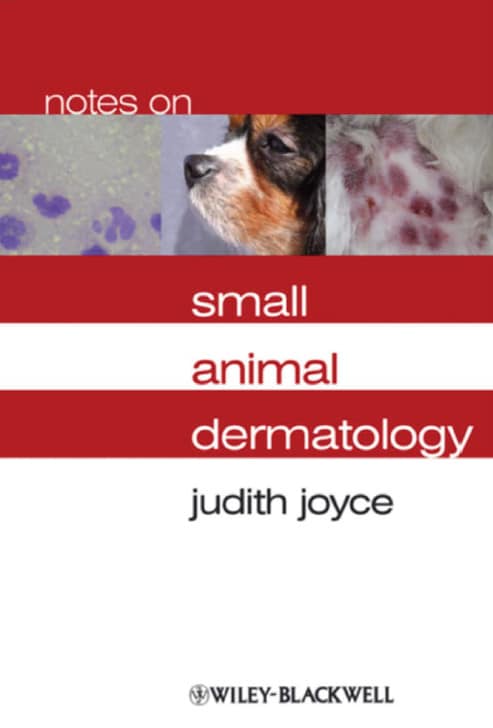
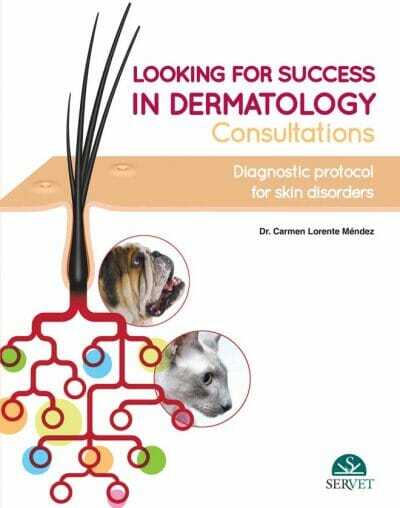



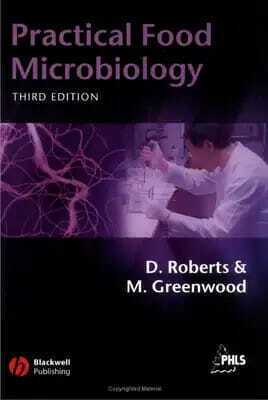

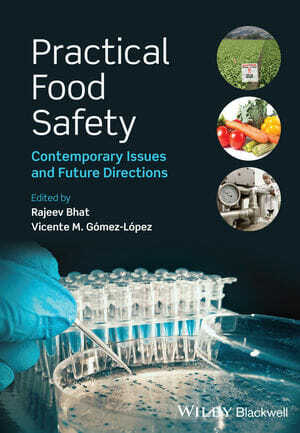
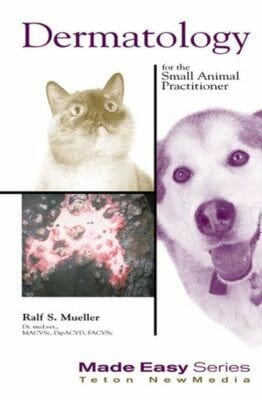

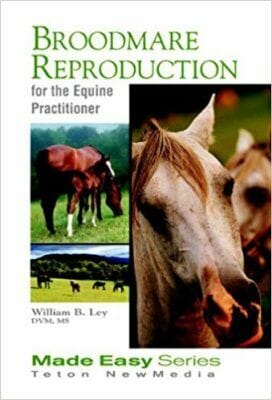
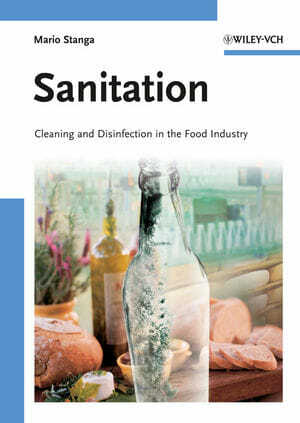
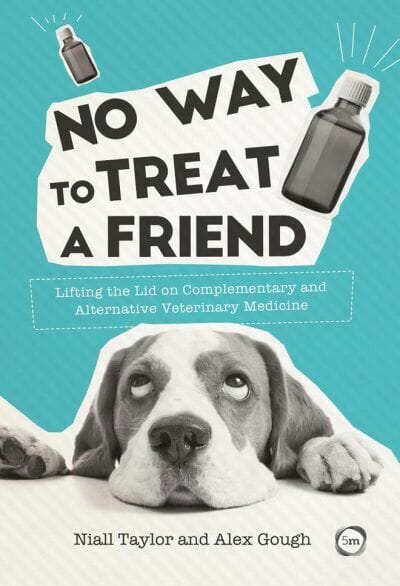
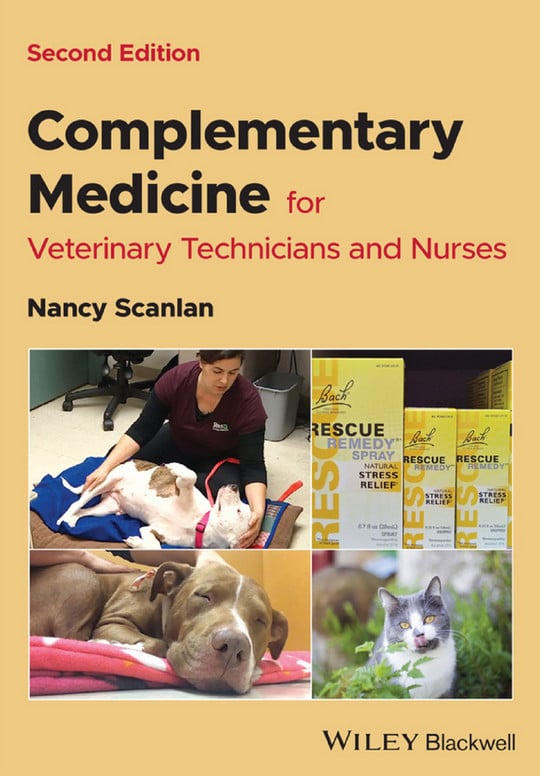
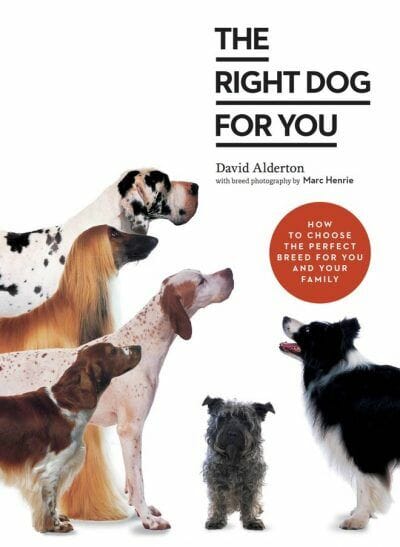
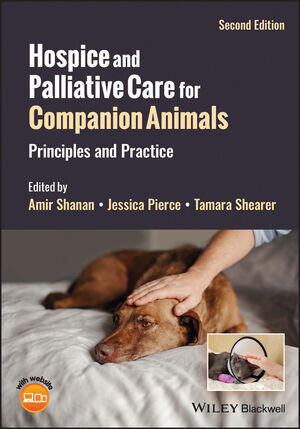
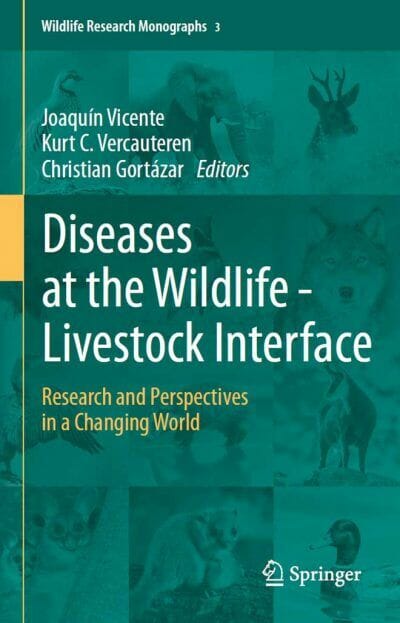








![Ettinger’s Textbook of Veterinary Internal Medicine 9th Edition [PDF+Videos] Ettinger’s Textbook of Veterinary Internal Medicine 9th Edition [True PDF+Videos]](https://www.vet-ebooks.com/wp-content/uploads/2024/10/ettingers-textbook-of-veterinary-internal-medicine-9th-edition-100x70.jpg)





